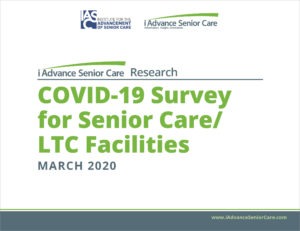Take a Look Before You Hook
| BY JULIE A. BRAUN, JD,LLM Take a look before you hook |
| Nursing homes and other healthcare facilities should be aware of the dangers caused by errors in administering medical gases. Some residents have been injured-and others have died-because of medical gas mix-ups; that is, the inappropriate administration of an industrial gas to a resident intended to receive a medical gas-for example, substituting industrial nitrogen for medical-grade oxygen. This usually occurs when the wrong gas is forcibly connected to the oxygen supply system. Although these types of misconnections are uncommon, the risk persists in most nursing homes-including yours. Readers are urged to take every opportunity to promote the importance of properly handling medical gases. |
| The Problem Oxygen supply systems in healthcare facilities are equipped with gas-specific connectors that fit only the corresponding connectors on the cryogenic vessels in which oxygen is delivered. Cryogenic vessels are tubular containers used to hold materials stored at very low temperatures, such as medical gases. Among the organizations that have received reports of improper handling of medical gases resulting in death/injury is the United States Pharmacopeia (USP), the public standards-setting authority for all prescription and over-the-counter medicines, dietary supplements, and other healthcare products manufactured and sold in the United States. The USP sets the standards for medical gases, including those that address quality, strength, purity, packaging, labeling, and identification. Other organizations receiving reports include the Joint Commission on Accreditation of Healthcare Organizations, which released a Sentinel Event Alert, “Medical Gas Mix-Ups” (available at: www.jointcommission.org/SentinelEvents/SentinelEventAlert/sea_21.htm) and the Food and Drug Administration (FDA). Medical gases include oxygen, nitrogen, nitric oxide, nitrous oxide USP, carbon dioxide USP, helium USP, medical air USP, and combinations of these gases. In March 2001, the FDA issued a guidance for nursing homes, hospitals, and other healthcare facilities containing specific recommendations for, among other things, the appropriate education and training of healthcare facility and medical gas manufacturer employees involved in handling medical gases and their containers (available at: www.fda.gov/cder/guidance/4341fnl.pdf). And in July 2001, the agency issued a public health advisory on the potential for injury from medical gas misconnections (available at: https://www.fda.gov/cdrh/safety/medical-gas-misconnect.html). Between 1996 and April 2004, the FDA received several reports of medical gas mix-ups resulting in at least 8 patient deaths and 18 serious patient injuries. Because nursing homes and hospitals are not required to report adverse events associated with medical gas mix-ups to the FDA, it is likely that the actual number of these events exceeds the number reported. Reports received by the FDA involve two major types of medical gas storage containers: portable cryogenic containers and high-pressure medical gas cylinders. In the cases reviewed, deaths and/or injuries occurred when two sequential errors were made. First, a cryogenic vessel containing another gas was mistakenly identified as one containing oxygen. Second, the gas-specific connector on that particular cryogenic vessel was changed or misadapted. Consequently, the wrong gas was connected to an oxygen delivery system. In many of the reported incidents, the person connecting the vessel to the oxygen delivery system (either the delivery person or a facility employee) did not know that the gas-specific connector is designed as a safeguard to prevent such mishaps. The FDA’s Solution |
| Steven Galson, MD, MPH, director of the Center for Drug Evaluation and Research, said, “By issuing this proposal, (the) FDA is heightening consumer and industry awareness about this specialty area of regulated products. Greater understanding of the possible problems associated with the use of medical gases and the steps we can take to eliminate them will only lead to safer use of these products.” The agency anticipates that medical gas mix-ups will be largely averted if (1) users can more readily identify portable cryogenic containers that contain medical gases, and (2) the gas-use-outlet connections on these containers cannot be easily removed other than by the manufacturers responsible for filling them. Accordingly, the regulations targeting medical gas manufacturers and distributors address the labels, colors, dedications, and designs of medical gas containers and closures. The regulations will require that specific portable medical gas containers comply with certain requirements. For example, containers with gas-use-outlet connections, which are used to connect containers to gas supply systems, must be equipped with fittings that cannot be easily removed to discourage the improper hookup of the wrong types of gases to breathing equipment. Also, labels should completely wrap around container tops to provide better identification no matter how the tank is turned. In addition, high-pressure medical gas cylinders should be painted according to a standard color-coding system that corresponds to the gases stored within-for instance, green for oxygen, blue for nitrous oxide, and yellow for air; and containers must be dedicated to medical use to prevent reuse of industrial gas containers for medical purposes-a practice that can lead to contamination by cleaning the containers with solvent residues. In addition to FDA efforts, the medical gas industry and other bodies have taken steps to help prevent medical gas mix-ups and |
| Case Illustration Fatal Mistake: Oxygen Tank Mix-Up Blamed in Deaths of Ohio Nursing Home Residents On December 7, 2000, four residents of a nursing home in Bellbrook, Ohio, died and six were injured after being administered industrial nitrogen instead of oxygen. The 84-bed nursing home received a shipment of four portable cryogenic medical gas containers labeled as medical oxygen, but one container also bore an industrial nitrogen label that partially obscured the medical oxygen label. That vessel was filled with industrial nitrogen. The nursing home was running low on oxygen and sent an employee to connect a new oxygen vessel to the oxygen supply system. The employee mistakenly selected the nitrogen container. Despite recommendations by the Compressed Gas Association, a safety and standards organization for medical and industrial gases, many of the large cryogenic vessels that contain medical gases do not have permanently brazed, or welded, connections or fittings that cannot be removed. The container’s nitrogen-specific gas-use-outlet connection was incompatible with the connector on the facility’s oxygen supply system. Although the employee initially was unable to connect the container to the oxygen supply system, the fatal connection ultimately was made when an oxygen-specific gas-use-outlet connection from an empty portable cryogenic medical oxygen container was removed and substituted for the nitrogen-specific connection on the industrial nitrogen container. The employee then connected the deadly product to the oxygen supply system. The employee was not properly trained and did not examine the drug label to verify that the product was, indeed, medical oxygen before installing the vessel. Furthermore, the employee did not know that connection incompatibility is a built-in safeguard. |
| The Recommendations: Follow Simple Safety Procedures Avoid medical gas mix-ups by following a few simple safety procedures. It is important that all employees handling a medical gas be alerted to and reminded of the possible hazards associated with its use. To avoid possible injuries from misconnected medical gases, implement the following procedures:
|
| Practice Tips Gases for medical use are prescription drugs that must be carefully regulated and handled. Adapters should never be used and fittings should never be changed on medical gas containers. If a connection does not fit, it is not supposed to fit. Contact the supplier immediately. The bottom line: Won’t connect? Don’t connect! Store medical-grade products separately from industrial-grade products in well-defined areas. Educate and train personnel directly responsible for handling medical gas to recognize medical-gas labels. Examine all labels carefully before hooking containers to the system. Skilled, knowledgeable personnel should always check the container and connection before introducing gas into the system. |
| Despite existing regulatory requirements and industry standards for medical gases, there have been repeated incidents in which cryogenic containers of harmful industrial gases have been connected to medical oxygen supply systems in nursing homes and other healthcare facilities, and subsequently administered to residents. The FDA’s proposed amendment to its CGMP regulations, together with existing regulations, should ensure that foreseeable and potentially deadly medical gas mix-ups do not occur in the future. Not being alert to the hazards of medical gas mix-ups places your residents at risk of injury or death and could potentially put your facility at risk of legal action. That’s why it is important to understand the possible problems associated with the use of medical gases and the steps needed to drastically reduce, or eliminate, the incidence of adverse events. |
| Julie A. Braun, JD, LLM, is a Chicago-based attorney and writer. For more information, call (715) 649-3244. To send your comments to the author and editors, e-mail braun0606@nursinghomesmagazine.com. |
Related Articles
Topics: Articles , Clinical , Rehabilitation , Risk Management , Staffing











